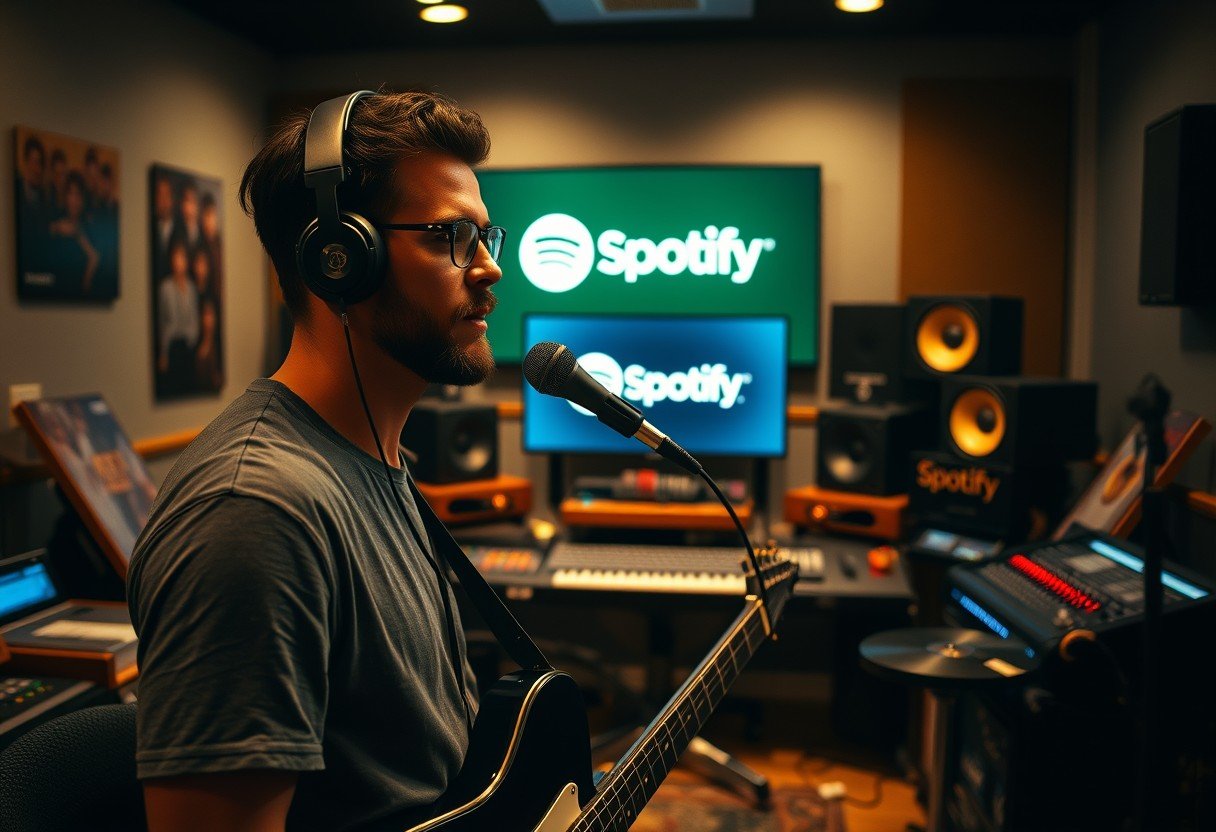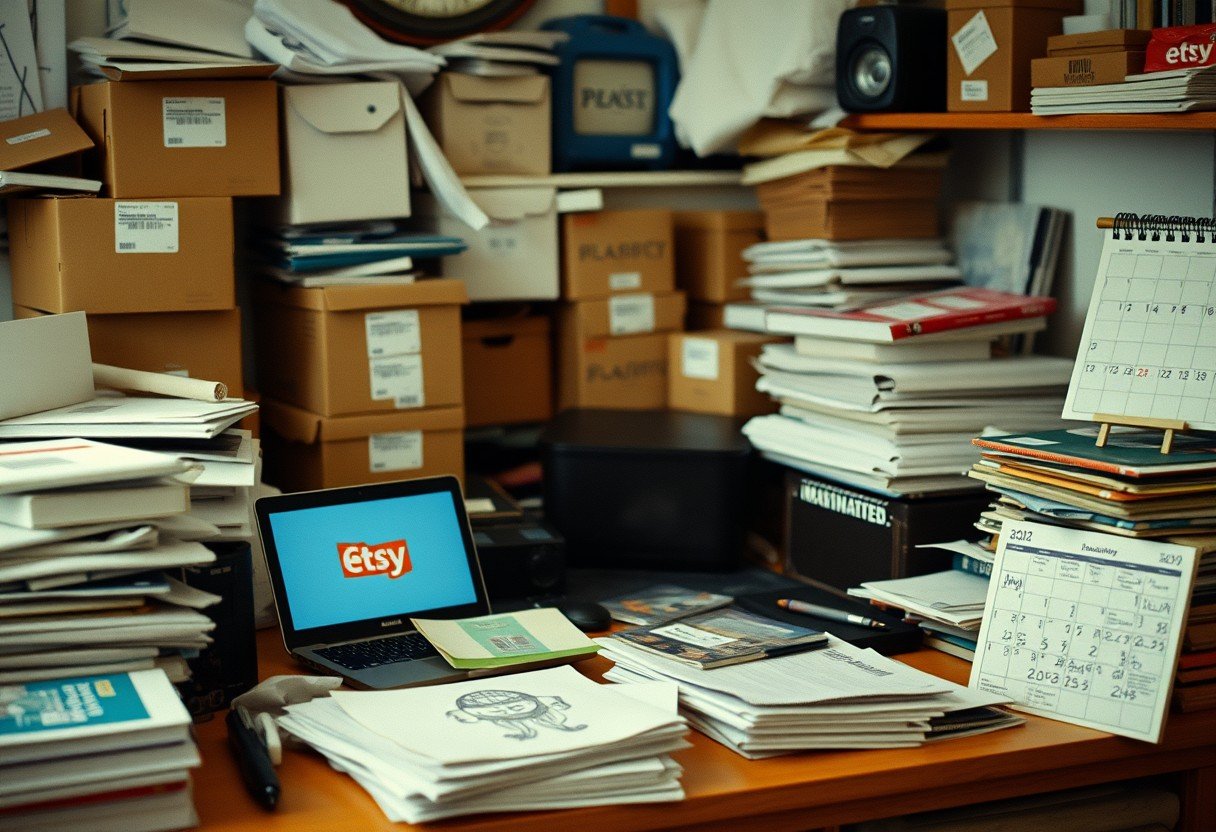For artists today, deciding to use Spotify is a huge choice. The platform can get your music in front of millions of listeners worldwide, but the money you earn per stream can be very low. This creates a big debate: is the exposure worth the small payout? Understanding how Spotify works is key for any musician trying to build a career in the modern music industry.
How Spotify’s Business Model Affects Artist Pay
Spotify’s payment system can be confusing, but it all starts with how the company makes money. It uses a “freemium” model, offering a free, ad-supported version and a paid, ad-free subscription. All the money from ads and subscriptions goes into one big pot.
From this total revenue pool, Spotify pays out a percentage to rights holders, which includes record labels, publishers, and distributors. The amount an artist receives is based on their share of the total streams across the platform, a system known as the pro-rata model.
This means you are not paid a flat rate per stream. Instead, your earnings depend on how many streams your music gets compared to everyone else’s. Because the pool is shared among millions of artists, the payment for a single stream often ends up being just a fraction of a cent. This is why many artists find it hard to earn a living from Spotify streams alone.
The Bright Side: Major Benefits of Using Spotify
Despite the low pay, Spotify offers powerful advantages that are hard to ignore. For many musicians, especially those just starting, the platform is an essential tool for growth and discovery. It breaks down barriers that once kept artists from reaching a wider audience.
The most significant benefit is exposure. Spotify has hundreds of millions of active users who are constantly looking for new music. Getting your song on a popular curated playlist, like “Discover Weekly” or “RapCaviar,” can lead to a massive spike in listeners overnight. This kind of reach was once only possible with a major record deal.
Beyond playlists, Spotify helps you connect with fans globally. Your music is no longer limited by geography.
- Global Reach: An artist in a small town can find a dedicated fanbase in a country on the other side of the world without traditional distribution.
- Data and Analytics: The “Spotify for Artists” dashboard gives you valuable insights into who your listeners are, where they live, and what other music they like.
- Easy Sharing: Fans can easily share your tracks on social media, creating word-of-mouth promotion that helps you grow organically.
This access to a global stage and powerful promotional tools can be a game-changer for building a career.
The Downside: Why Artists are Frustrated with Spotify
The biggest and most common complaint from artists about Spotify is the low compensation. While the platform generates billions in revenue, the per-stream payout to artists is notoriously small. This makes it incredibly difficult for independent or niche artists to earn a sustainable income from their recordings.
Another major issue is how streaming has changed listener behavior. The focus has shifted from albums to individual tracks. Many listeners now consume music through playlists, often cherry-picking singles rather than buying or streaming an entire album. This can devalue the concept of a full album as a cohesive work of art.
This shift forces artists to change their release strategies, often pushing them to release a constant stream of singles to stay relevant in the algorithm. This can be creatively draining and puts pressure on artists to prioritize quantity over the quality of a full-length project. It also hurts a key revenue stream that musicians relied on for decades: album sales.
How Do Other Streaming Services Compare?
When considering where to focus your energy, it’s helpful to see how Spotify stacks up against its main competitors in terms of artist payouts. While no streaming service offers massive per-stream rates, some are significantly better than others. Tidal, for example, was founded with the goal of providing higher-fidelity audio and fairer artist compensation.
Here is a quick comparison of the average payouts from the top platforms:
| Platform | Average Payout per Stream |
|---|---|
| Spotify | $0.003 – $0.005 |
| Apple Music | $0.007 – $0.01 |
| Tidal | $0.0125 |
Apple Music generally pays more than Spotify because its model relies entirely on paid subscriptions, with no free tier to dilute the revenue pool. Tidal leads the pack with the highest per-stream rate, making it an attractive option for artists who prioritize fair pay. However, both Apple Music and Tidal have fewer users than Spotify, so the potential for massive exposure might be lower.
Perspectives from the Inside: What Artists are Saying
The debate around Spotify isn’t just about numbers; it’s about the real-life experiences of musicians. Established artists often have a more critical view of the platform. Having built their careers in an era of physical sales, many see streaming royalties as shockingly low compared to what they used to earn from CDs and vinyl. For them, Spotify can feel like a step backward financially.
On the other hand, many emerging artists view Spotify as an indispensable tool. For a new band or solo act, the platform offers a chance to be discovered without needing a massive marketing budget or a record label. It levels the playing field, allowing talented musicians to build an audience from scratch.
These up-and-coming artists are more likely to see streaming as one part of a larger strategy. They use the exposure from Spotify to drive other sources of income, such as selling merchandise, getting brand deals, and, most importantly, selling tickets to live shows. For them, a stream isn’t just a fraction of a cent; it’s a potential new fan who might come to a concert.
Making Spotify Work for You as an Artist
Simply uploading your music to Spotify and hoping for the best is not enough. To succeed, you need to be proactive and use the tools the platform provides. Your “Spotify for Artists” account is your command center. Use it to update your bio, add photos, and share playlists with your fans.
One of the most effective strategies is to focus on getting your music onto playlists. You can pitch your upcoming releases directly to Spotify’s editorial team for consideration on official playlists. Also, research independent curators who create popular playlists in your genre and reach out to them.
Finally, promote your Spotify profile everywhere. Link to it from your social media accounts, your website, and your email newsletter. Encourage your fans to follow you on Spotify, as this increases the chances of your new music appearing in their “Release Radar” playlists. By actively managing your presence, you can turn passive listeners into dedicated fans.
Frequently Asked Questions about Spotify for Artists
How much does Spotify actually pay per stream?
Spotify’s payout varies but typically ranges from $0.003 to $0.005 per stream. This rate is not fixed and depends on factors like the listener’s location, whether they have a premium subscription, and agreements with your distributor.
Can new artists really get discovered on Spotify?
Yes, absolutely. Spotify’s algorithms and curated playlists are powerful discovery tools. Getting featured on playlists like “Discover Weekly” or a genre-specific editorial playlist can introduce your music to thousands of new listeners who are likely to enjoy your style.
Do artists lose the rights to their music on Spotify?
No, artists or their labels retain full ownership of their music copyrights. When you distribute your music to Spotify, you are granting them a license to stream it, not selling them the rights to it.
Is Spotify fair to independent artists?
This is a topic of intense debate. While Spotify gives independent artists a global platform, its pro-rata payment model tends to favor major artists with massive stream counts. This can make it difficult for smaller artists to earn a fair share of the revenue.
Are there better streaming alternatives for artist income?
Platforms like Bandcamp and Patreon are often cited as better alternatives for direct artist support. Bandcamp allows you to sell digital downloads and merchandise directly to fans, keeping a much larger percentage of the revenue. Patreon enables fans to support you with a monthly subscription.









Leave a Comment